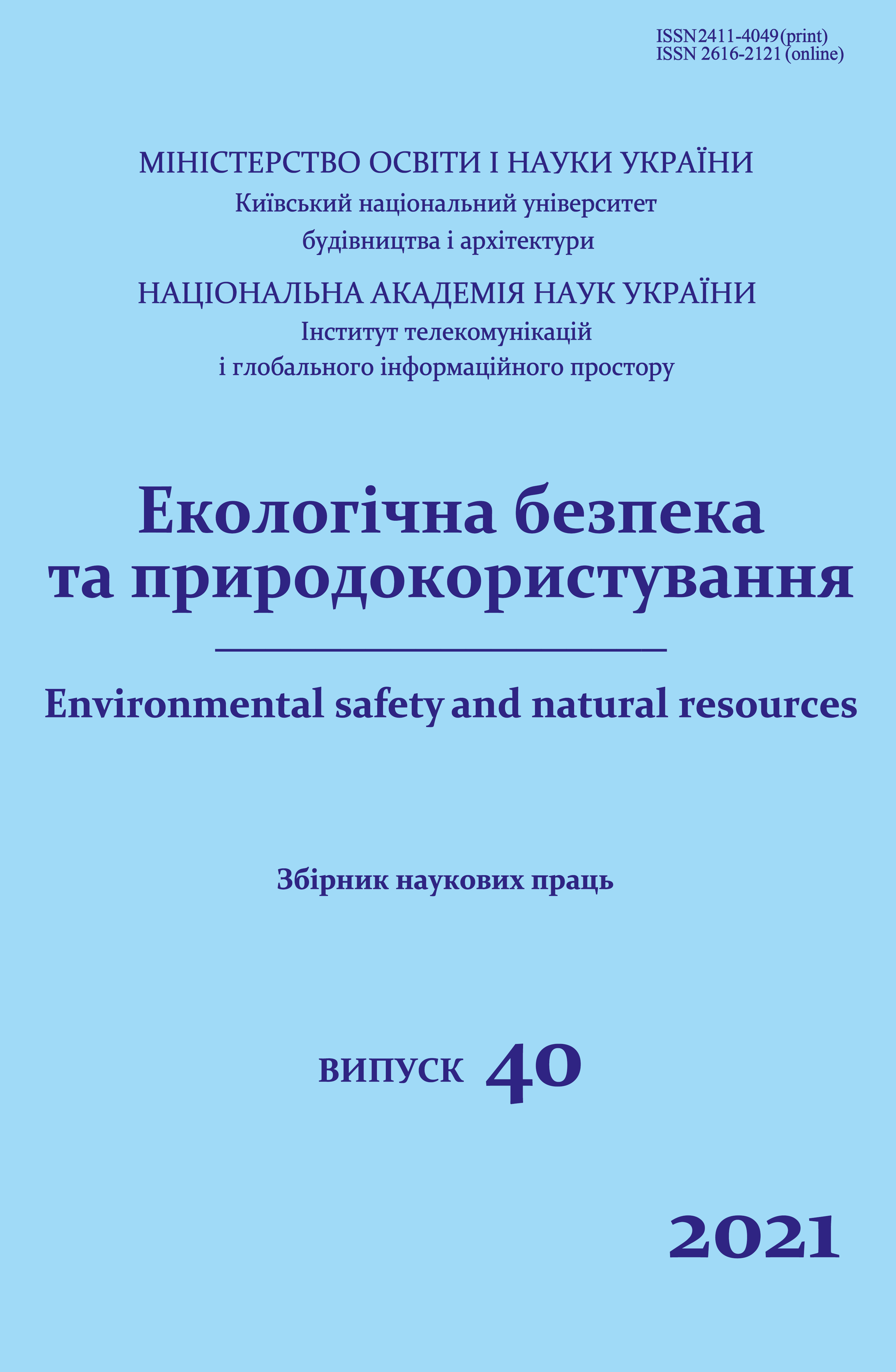Efective drainage of rainwater from roads by rain garden-strips in the concept of the city-sponge
DOI:
https://doi.org/10.32347/2411-4049.2021.4.46-59Keywords:
urbanization, urbocenosis, technogenic load, green construction, green structures, rain gardens, rain-gardens bands, sponge cityAbstract
Today there is a problem of flooding of urban areas with rainwater and their slow drainage to rainwater sewage and further to the distribution collectors. There are several ways to ensure the resilience of urban areas to heavy rains and downpours. One of the current methods is "green" roofs (horizontal or sloping) ith green plantings, which is capable to absorb water. A certain amount of water is absorbed by the plants, its certain amount remains in the substratum, and the rest is filtered by several layers of the structure under the plants, which throttles the movement of it to the storm-water sewage. The second method is to collect rainwater in special storage tanks, which are located on the roof or near to the building or in the soil structure in the yard. The accumulated water is used for household needs: watering lawns, washing, flushing toilets, washing floors, cleaning pavements, etc. The third method is to absorb water and drain it by natural biological terrestrial sponge facilities: permeable surfaces, sloping terrain, natural vegetation, green structures, rain gardens, etc. These correspond to the modern concept of "sponge city". The authors propose a method of rapid drainage of rainwater using special "green structures" – rain-garden bands along the roadways. The ability to capture water by rain-garden bands has been confirmed on the example of most of the regional centres of Ukraine in case of the strongest observed precipitation. Such rapid drainage becomes especially important in the transition from cities for cars to cities for bicycles. This increases the requirements to avoid slippery roads for increasing the stability of these vehicles. In addition, the proposed rain gardens with shrubs can perform safe protective functions by extinguishing the kinetic energy of bouncing cars during a road accident.
References
Ploskyi, V. O., Tkachenko, T. M., Mileikovskyi, V. O., & Dziubenko, V. H. (2016). Modeliuvannia termichnoho oporu travianoho sharu zelenoi pokrivli. Visnyk Natsionalnoho universytetu "Lvivska politekhnika". Teoriia i praktyka budivnytstva, 844, 158-163 (in Ukrainian).
Pin, A. M. (2018). Adaptatsiia «zelenykh» tekhnolohii u kontseptsiiu rozumnoho mista. Sotsialno-ekonomichni problemy suchasnoho periodu Ukrainy: Zb. nauk. Prats, 5(133), 76-82 (in Ukrainian). URL: http://ird.gov.ua/sep/sep20185(133)/sep20185(133)_076_PinAM.pdf
Gioannini, R., Al-Ajlouni, M., Kile, R., VanLeeuwen, D., & Hilaire, R. St. (2018). Plant Communities Suitable for Green Roofs in Arid Regions. Sustainability, 10(6), 1755. doi: https://doi.org/10.3390/su10061755
Rey, C. V. et al. (2020). Green Roof Design with Engineered Extensive Substrates and Native Species to Evaluate Stormwater Runoff and Plant Establishment in a Neotropical Mountain. Sustainability, 12(16), 6534. doi: https://doi.org/10.3390/su12166534
Zeng, J., Huang, G., Luo, H., Mai, Y., & Wu, H. (2019). First flush of non-point source pollution and hydrological effects of LID in a Guangzhou community. Scientific Reports, 9, 13865. doi: https://doi.org/10.1038/s41598-019-50467-8
Chen, H., Ma, J., Wang, X., Xu, P., Zheng, S., & Zhao, Y. (2018). Effects of Biochar and Sludge on Carbon Storage of Urban Green Roofs. Forests, 9(7), 413. doi: https://doi.org/10.3390/f9070413
Zluwa, I., & Pitha, U. (2021). The Combination of Building Greenery and Photovoltaic Energy Production – A Discussion of Challenges and Opportunities in Design. Sustainability, 13(3), 1537. doi: https://doi.org/10.3390/su13031537
Chen Y. et al. (2020). Numerical Simulation of Local Climate Zone Cooling Achieved through Modification of Trees, Albedo and Green Roofs. A Case Study of Changsha, China. Sustainability, 12(7), 2752. doi: https://doi.org/10.3390/su12072752
Gill, A. S., Purnell, K., Palmer, M. I., Stein, J., & McGuire, K. L. (2020). Microbial Composition and Functional Diversity Differ Across Urban Green Infrastructure Types. Frontiers in Microbiology, 11. doi: https://doi.org/10.3389/fmicb.2020.00912
Bandehali, B., Miri, T., Onyeaka, H., Kumar, P. (2021). Current State of Indoor Air Phytoremediation Using Potted Plants and Green Walls. Atmosphere, 12(4), 473. doi: https://doi.org/10.3390/atmos12040473
Tkachenko, T., & Lіstrova, T. (2019). Іspolzovanіe zelеnykh krovel v regulіrovanіі dozhdevykh stokov. Aktualnye nauchno-tekhnіcheskіe і еkologіcheskіe problemy melіoratsіі zemel. (V. Zheliazko, Ed.). In Mezhdunarodnaya nauchno-praktycheskaya konferentsіya, posviashchennoi 100-letіiu melіoratіvnogo obrazovaniia v Horkakh (pp. 312-316). Belorusskaia gosudarstvennaia selskokhoziaistvennaia akademiia. Horky: RPTs «Pechatnyk» (in Russian).
Tkachenko, T. M., & Prokopenko, I. O. (2020). Сalculation of maintenance of surface drainage roofing of a German manufacturer. Environmental Safety and Natural Resources, 35(3), 44-56. https://doi.org/10.32347/2411-4049.2020.3.44-56
Liu, L., Cao, J., Ali, M., Zhang, J., & Wang, Z. (2021). Impact of green roof plant species on domestic wastewater treatment. Environmental advances, 4, 100059. doi: https://doi.org/10.1016/j.envadv.2021.100059
Procaccini, G., & Monticelli, C. (2021). A Green Roof Case Study in the Urban Context of Milan: Integrating the Residential and Cultivation Functions for Sustainable Development. Water, 13(2), 137. doi: https://doi.org/10.3390/w13020137
ZinCo (2018). Pokrivlia bez nakhylu. Retrieved 17.11.2021 from: https://zinco.com.ua/uk/systems/extensive/roof-without-slope (In Ukrainian).
ZinCo (2018). Pokhyla zelena pokrivlia do 35°. Retrieved 17.11.2021 from: https://zinco.com.ua/uk/systems/inclined-roof/inclined-roof-35 (in Ukrainian).
ZinCo (2018). Systema upravlinnia zlyvovymy vodamy. Retrieved 17.11.2021 from: https://zinco.com.ua/uk/systems/stormwater-management (in Ukrainian).
Wilo (2016). Ispolzovanie dozhdevoi vody – spravochnoe posobie. Retrieved 19.09.2021 from: https://atislab.ru/upload/doc/wilo/Brochure_rainwater_205x297_RU.pdf (in Ukrainian).
Miller, R. (1980). Water use in Syria and Palestine from the Neolithic to the Bronze Age. World Archaeology, 11(3), 331-341. Retrieved from: https://www.jstor.org/stable/124254
Tkachenko, T. M. (2018). Naukovo-metodolohichni osnovy pidvyshchennia rivnia ekolohichnoi bezpeky urbotsenoziv shliakhom stvorennia enerhoefektyvnykh tekhnolohii «zelenoho» budivnytstva. dys. ... d-ra tekhn. Nauk. Kyiv: Kyivskyi natsionalnyi universytet budivnytstva i arkhitektury (in Ukrainian).
Zhang, Y., Zhao, W., Chen X., Jun, C., Hao, J., Tang, X., & Zhai, J. (2021). Assessment on the Effectiveness of Urban Stormwater Management. Water, 13(1), 4. doi: https://doi.org/10.3390/w13010004
Downloads
Published
How to Cite
Issue
Section
License
Copyright (c) 2021 Roman O. Hlushchenko, Tetiana M. Tkachenko, Viktor O. Mileikovskyi

This work is licensed under a Creative Commons Attribution 4.0 International License.
The journal «Environmental safety and natural resources» works under Creative Commons Attribution 4.0 International (CC BY 4.0).
The licensing policy is compatible with the overwhelming majority of open access and archiving policies.

